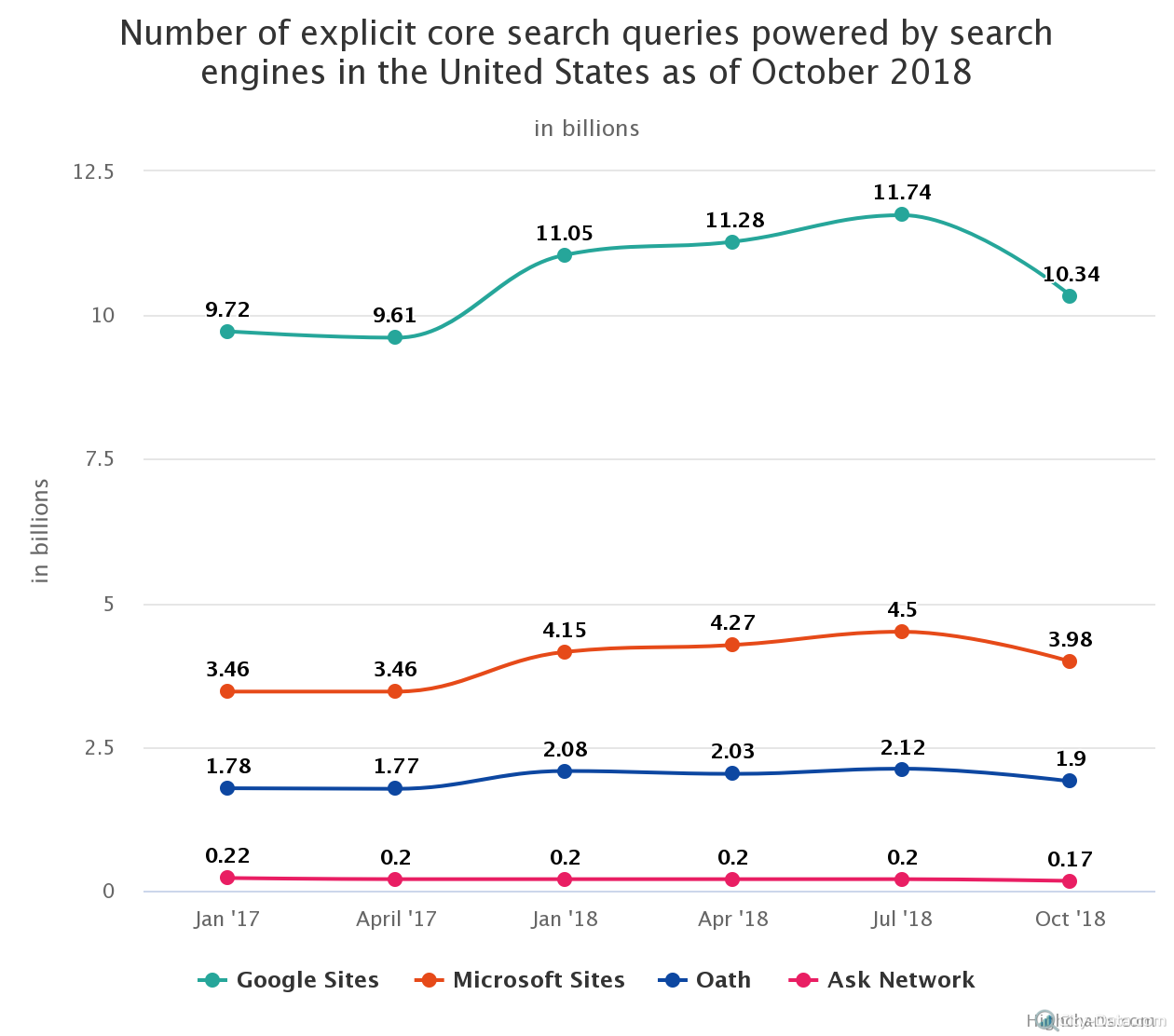Pavel Prikhodko, Ph.D. Machine Learning
The total number of search engine users in the United States in 2014 was estimated to be around 213.6 million (as you can see on the chart below). In 2015, about 219.7 million U.S. internet users accessed online search services such as Yahoo! or Google. By the end of 2017, the total number of search engine users reached 230 million.
The forecast suggests that in 2018 and 2019 the number of search engine users will grow to 233.9 million and 236.5 million users respectively. By 2020, the number is expected to increase to 239.1 million users.

Our next graph shows us some interesting information on the average number of typed search terms during online searches in the U.S. as of August 2017. During that month, about 37.68 percent of all online search queries in the U.S. contained just one word. The share of searches containing two words and three words amounted to 21.47 percent and 17.86 percent respectively. In August 2017, 10.95 percent of all queries contained four words while 6.28 percent of search engine queries contained five words.
The share of queries containing six words was 2.42 percent, while seven-word queries constituted 1.24 percent. Eight-word queries were responsible for only 0.7 percent of all queries.

Now let’s take a look at the statistics showing the number of core search queries processed by the top four online search engines in the U.S. During October of 2018, Google sites processed more than 10.34 billion search queries, while Microsoft sites processed about 3.98 billion search queries. Oath (formerly known as Yahoo sites) handled about 1.9 billion search queries, while Ask Network processed 0.17 billion queries. As you can see, Google is the undisputed leader here.

About Pavel Prikhodko
Pavel Prikhodko, Ph.D. Machine Learning
Pavel has worked for many years as a researcher and developer on a wide range of applications (varying from mechanics and manufacturing to social data, finance and advertising), building predictive systems and trying to find stories that data can tell.
In his free time, he enjoys being with his family.
Other posts by Pavel Prikhodko:
